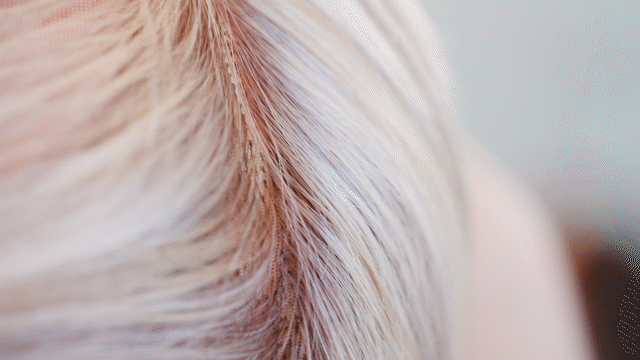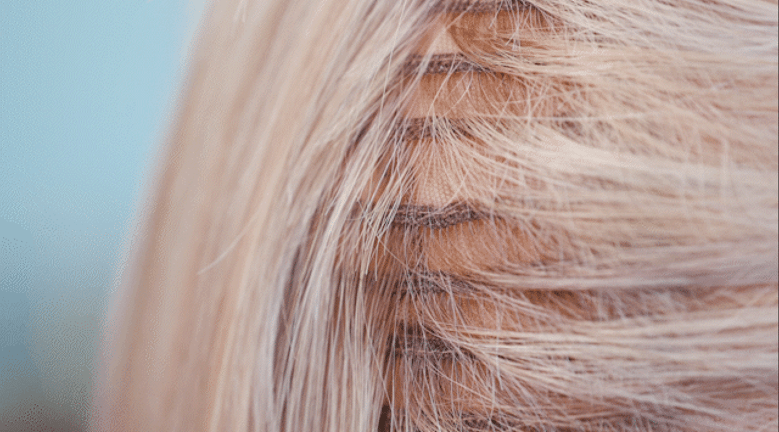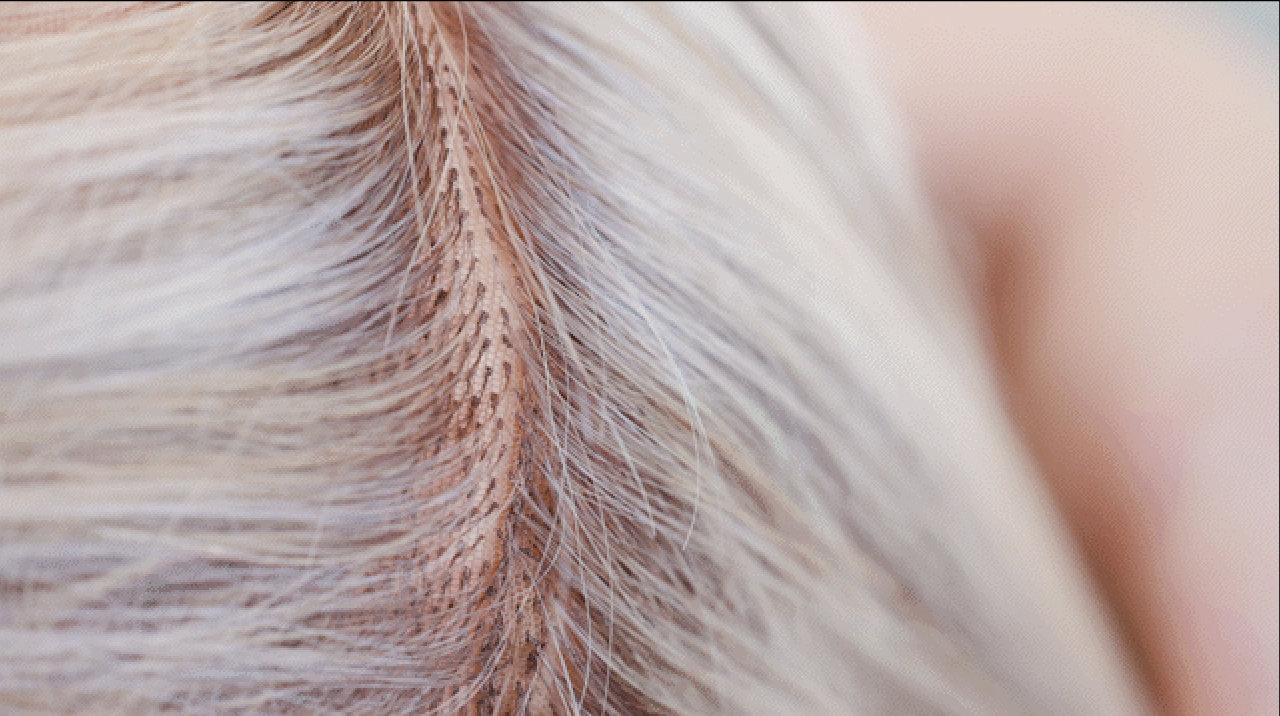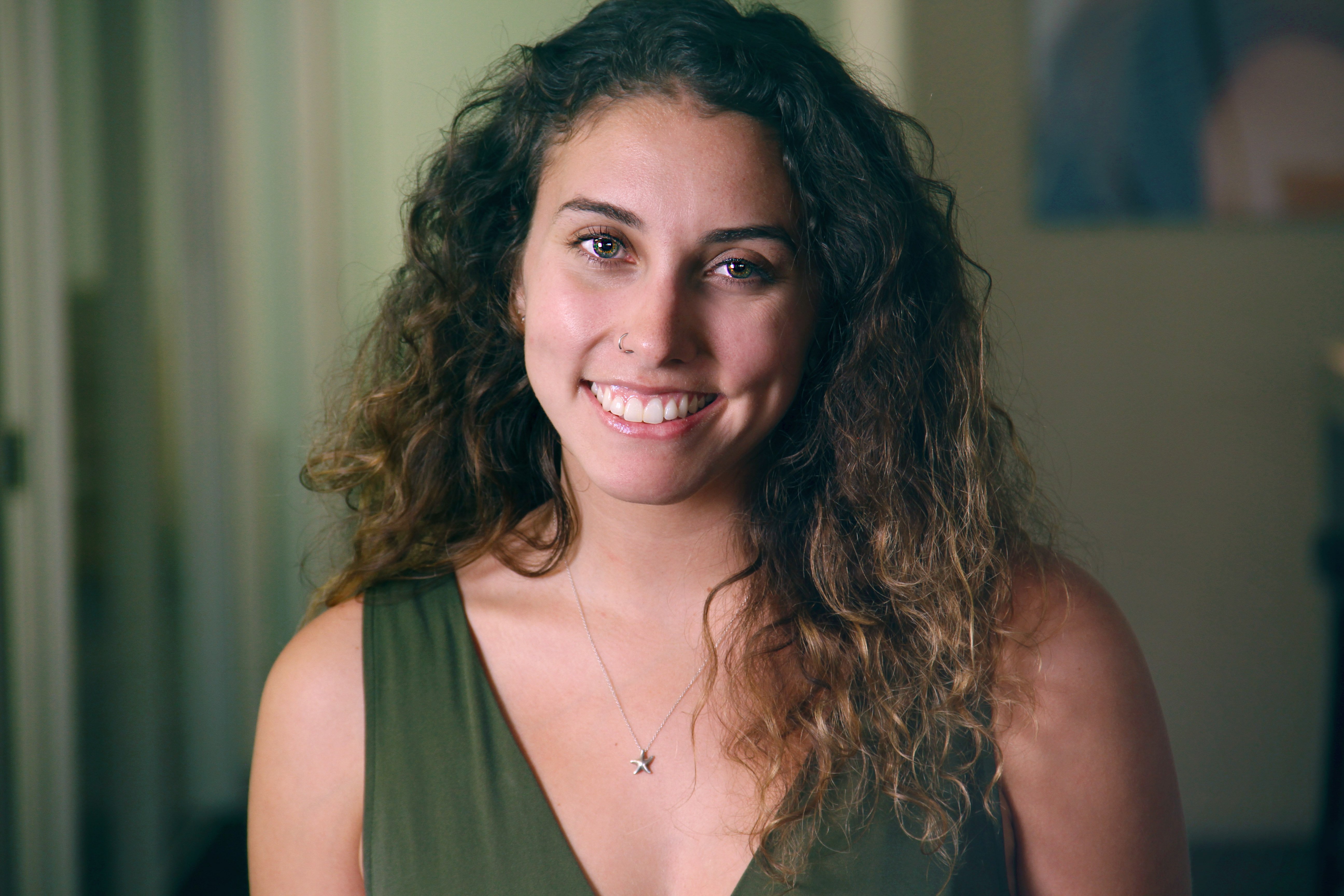Wefted vs. Hand-Tied Wigs: Definitions and Differences

When you enter the world of wig buying, you may feel like you’re learning to speak another language. There are so many terms thrown around. You might recognize some terms but not fully comprehend what they mean. At Daniel Alain, we know how important it is to educate yourself before making a major decision. That’s why we’ve decided to highlight major terms, define them, and help you better understand different parts of the wig. This will help you make a more educated decision and feel more confident in your ability to choose which wig is best for your needs.
One of the most important factors of a wig is how the hair that is attached to it. The way hair is attached to a wig can impact the hair’s movement and how long the wig will last.
In this article, we’re going to focus on two ways hair is attached to the back of a wig. We’ll compare these two types of backs and break down the differences. We’ll mention which of our wigs falls into each category as a point of reference. By the end of this article, you’ll know what a wefted back is and what a hand-tied back is, allowing you to make a more educated decision and feel more confident in your ability to choose which wig is best for your needs.
What is wefting on a wig?
Wefting, also referred to as machine-wefting, is hair attached to a wig by sewing the hair onto strips; then, those strips are sewn onto the wig cap. A strip of hair looks like an extension. Each strip is sewn about a centimeter apart from another strip. Wefting is done by a machine.

How does wefting impact a wig?
A wefted wig may feel a bit heavier than a hand-tied wig. It’s possible that if the hair is pulled back too tightly or too high, the wefting will become visible. For example, a wefted wig can not be worn in a high ponytail as the wefting would be noticeable. Wefting makes the wig more durable and breathable. Machine-wefted pieces are less expensive than hand-tied pieces.
Which Daniel Alain wigs have wefted caps?
Three Daniel Alain wigs feature wefting. These include the Pixie, the Gripper Actif, and one of our most popular wigs: the René.
What is hand-tying on a wig?
Hand-tying is the process of attaching hair to a wig through a process called ventilation. Hair is pulled through a tiny lace hole in the cap. At Daniel Alain, we only ventilate 1-2 hairs per knot.

How does hand-tying impact a wig?
A hand-tied wig has more natural movement. It may feel lighter and more breathable. It will have a more natural look, without exposed material, if the hair is pulled back into a ponytail. A hand-tied piece costs more than a wefted piece because of the labor required to construct the piece.
Why are hand-tied pieces more expensive than wefted pieces?
Hand-tied pieces have a higher price tag than wefted pieces. A hand-tied piece takes much longer to complete than a wefted piece as a wefted piece relies on machinery whereas a hand-tied piece requires more human labor.
At Daniel Alain, our hand-tied pieces have only 1-2 hairs per knot. Other companies may have 4-5 hairs per knot. Having more hairs per knot loosens the knot more quickly over time and can cause the wig to lose its quality quicker. Having only 1-2 hairs per knot versus 4-5 hairs per knot (or a machine-wefted piece) increases the labor time. Whereas a wefted piece can be completed quickly, a hand-tied piece that attaches only 1-2 hairs at a time can take 4x as long.
Which Daniel Alain wigs have hand-tied caps?
Four Daniel Alain wigs feature hand-tying. These include the Gripper Lite, the Grandeur, the Chic, and one of our best-selling wigs: the Style.
Which type of wig cap is right for you?
A wefted piece may be right for you if you….
- Are working on a tighter budget
- Want to try a human hair wig
A hand-tied piece may be right for you if you….
- Want more styling versatility
- Want movement that most closely mimics that of biological hair
Now that you know the differences between a hand-tied and wefted wig as well as how these methods of construction impact the cost and functionality of the wig, you have more information to make an informed purchase. By learning more about terms used in the wig buying world, you’ll be more familiar with important considerations to factor in when deciding which wig to buy.
There are so many options available that it can be overwhelming to decide what you’d like on a wig. Our consultants can offer guidance and answer any questions you might have about your dream hair. If you’re ready to take one step closer to your best self, schedule a consultation to learn more about which wig may be right for your needs. If you want to read more about all things wigs, visit our Learning Center to continue your wig education.


